The ADRB Filing
This is an archive/reference post. As we talk through, it will be updated with recent changes boldfaced.
We finally have the Anti-Doping Review Board (ADRB) Filing. This was what Jacobs submitted to the ADRB in an attempt to have them give up on the case right away. We don't know if the ADRB seriously considered the substance, and we probably never will. We do know that the ADRB recommended USADA proceed with the case, causing us to move towards a hearing.
If the ADRB has accepted the filing, there would likely have been a direct, final appeal to CAS, and probably no public hearing.
[more]
[continuation]
Here's the whole the Anti-doping Review Board Filing if you want to download it. To just look, read on. There are also individual page links useful for discussions.
We are told that this filing is NOT an exhaustive list of defenses, so things that aren't mentioned may still be raised at the hearing. For instance, this dismisses the T/E tests in an offhand way that will probably not suffice in the final defense.
The filing makes a number of points, which include:
The most import arguments are about the CIR result. According to the filing, there were four metabolites tested. Two of them were clearly negative, one was modestly positive, and one was quite positive. The one they argue is the most important and indicative one is negative. The one that is most positive they claim shows a calibration error.
They argue legally that the WADA criteria require that all the tested metabolites be positive in order to report a positive result. This is open to interpretation, because the rules do not actually say that, because they are ambiguously worded. The filing argues that the ambiguity should be read in a way favorable to Landis, and cites the Restatement of Torts (a common US legal reference) for that interpretation. It is not clear if that would hold water with the rules and precedents of the arbitration environment. It might for the US AAA, but not for the Swiss based CAS, should it come down to that.
The Blow by Blow
(click on page identifier to see full size pdf)
Page 1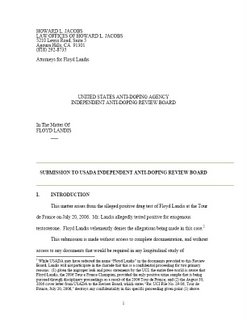
Identifies the case, and gives up on the pretense of anonymity about the case, and just uses the name Floyd Landis.
It says that the sumittal is made without access to many things they would need,
Page 2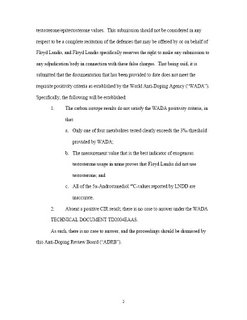
...especially data from other tests during the tour to provide a longitudinal study needed to claim a T/E positive. Without that data, there is no T/E positive to answer, and that must be dismissed.
They run down reasons to believe the CIR should have been considered negative.
Page 3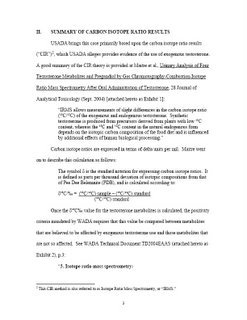
Introduces the CIR test and the relevant WADA standard.
Page 4
Summarizes values reported by LNDD for the A sample, while saying they may be inaccurate.
Page 5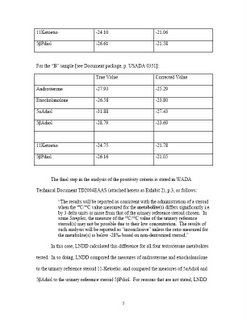
Shows the reported values for the B sample, and starts to discuss the result calculation method
Page 6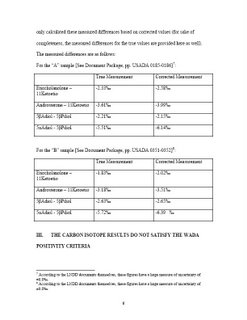
Notes that LNDD did calculations with "corrected" values, and the tables here also include the raw ("true") values. There is no explanation what the "correction" is about.
The tables on page 6 show the result values computed in both ways, with "true" and "corrected" deltas.
Page 7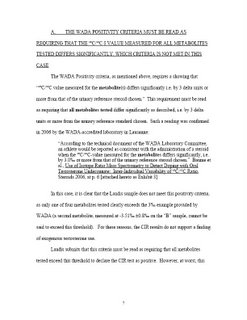
Begins the argument that the WADA criteria require all tested metabolites to be positive, citing Baume et. al. for clarification of the ambiguous standard.
The Landis samples don't, and the filing then confuses us by dragging in the reported 0.8% tolerances.
Page 8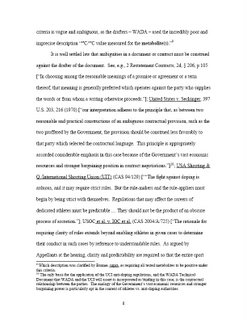
Notes the vagueness of the standard, and claims that this should be read in Landis' favor. To suport this claim, it cites the "Restatement of Contracts", a common US legal reference, and a number of US cases. It is not clear what precedence any of these cites have on this arbitration case, or what they would have under Swiss law for an eventual CAS review of the case.
Page 9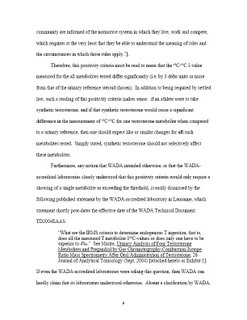
Continues to argue that all four must be positive to declare a positive result.
It then cites a statement by the Lausanne laboratory that suggests this should be clearly understood by WADA.
Page 10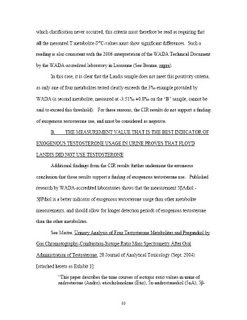
The filing then turns to the "best indicator", showing that the research shows the 5bA-5bP is a better indicator than the others, and should have a longer detection time.
Page 11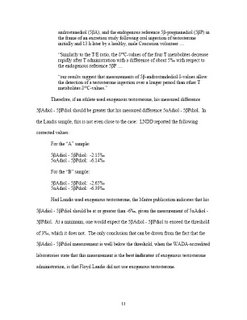
It then refers to a paper that says when doping, the 5bA-5bP should be greater than the 5aA-5bP.
It then says for the reported Landis data,
Page 12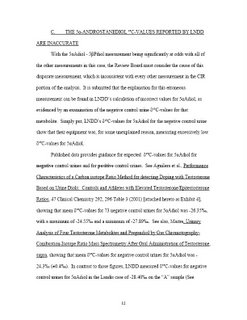
The filing then turns to the one metabolite that appeared to have a clear positive result, the 5aA-5bP delta.
The explanation offered is that the lab had a calibration error that returned an excessively low value for the reference 5aA sample.
It cites a paper on the control samples, and shows an expected range of absolute values.
Page 13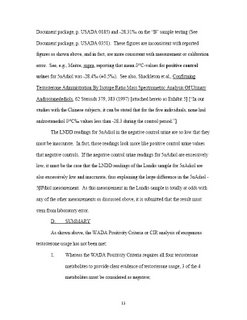
The standard samples measured in the Landis test are significantly outside the normal range for references, suggesting they must be inaccurate.
Page 14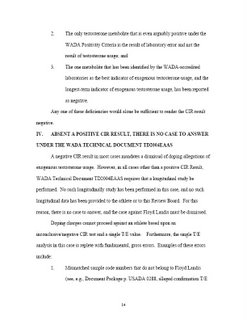
If they are inaccurate, then the values obtained on the Landis samples must also be innaccurate the same way, which would invalidate the conclusions for this metabolite.
So, the positivity criteria has not been met--
Page 15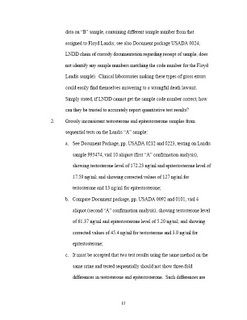
Page 16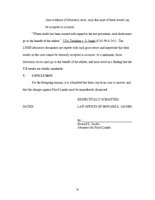
Therefore, you ought to just give up the case.
[end]
0 comments:
Post a Comment